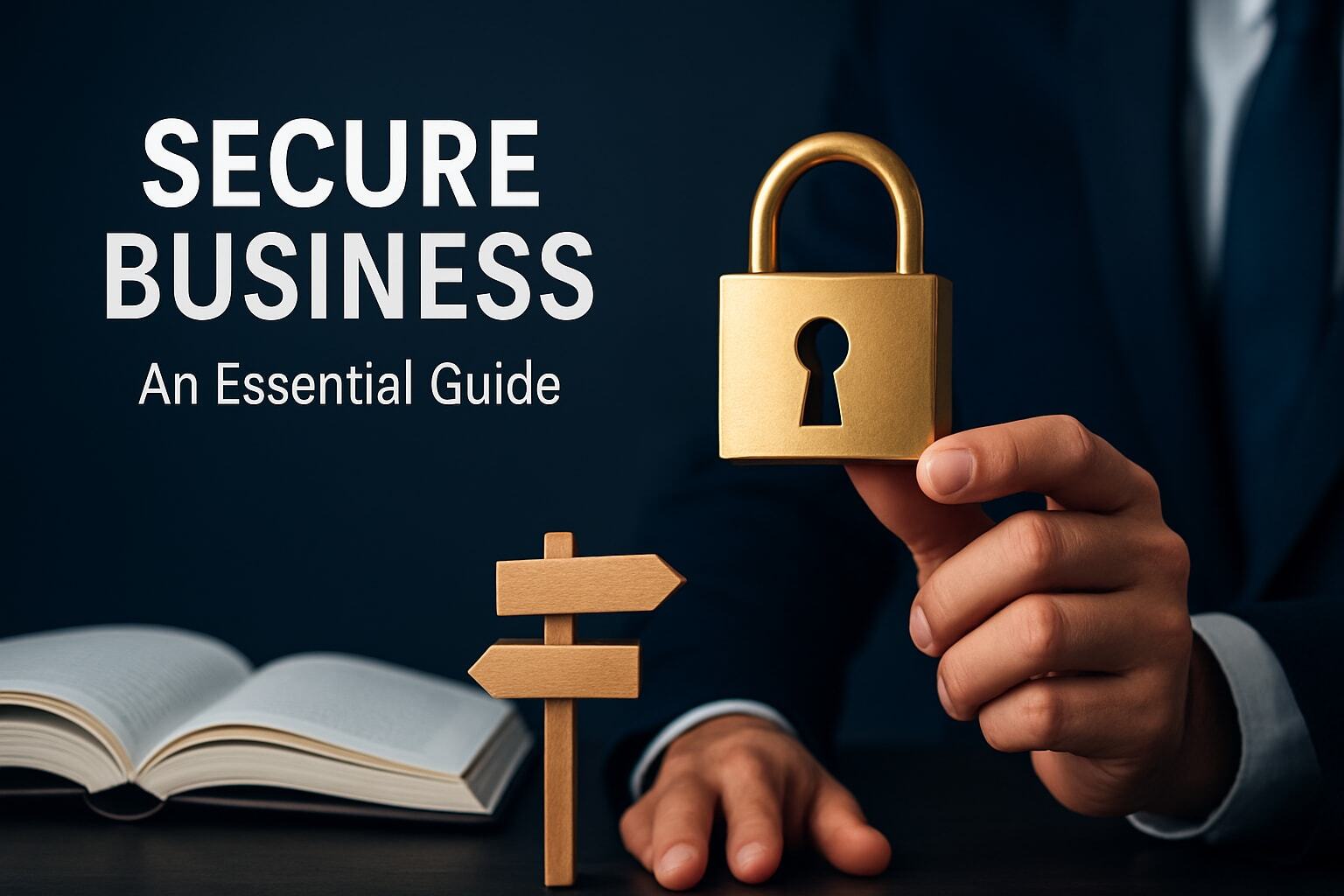Family Preparedness 2025: Why Survival Kits Are Selling Out and How to Be Ready
Families everywhere are paying more attention to emergency preparedness.
In fact, news reports last week showed that Americans are buying more survival kits, emergency food, and supplies than ever before. Stores are selling out of basic gear like flashlights, power banks, and even gas masks (Business Insider).
Why? People are feeling uneasy. Between storms, fires, global conflicts, and even unexpected blackouts, more families realize the same thing: waiting for help is not a plan.
Preparedness isn’t about fear. It’s about strength. It’s about saying, “If something happens, we’re ready.”
True preparedness goes beyond panic-driven shopping sprees—it’s about thoughtful planning: combining essential supplies, clear family plans, and access to critical documents. Here’s how families can build real resilience in 2025.
Family Preparedness in 2025: Why It Matters More Than Ever
Recent Trends in Survival Kit Sales
Across the country, families are buying survival gear at record levels. Emergency radios, backup power, and long-term food supplies are flying off the shelves. Online searches for “survival kit” and “go-bag” have surged.
This tells us something powerful: people want to feel more in control.
What Families Are Most Worried About Today
- Natural disasters like hurricanes and floods
- Wildfires that spread fast and leave little warning
- Power grid failures during storms or heatwaves
- Economic and global tensions creating uncertainty
Preparedness has moved from a “someday” thought to a “must-do” priority.
1. What Is True Family Preparedness?
Preparedness isn’t just having batteries in a drawer. True preparedness means combining:
- Supplies: Food, water, medicine, and gear.
- Plans: Knowing what to do, where to go, and how to stay in touch.
- Documents: Keeping IDs, insurance, and medical records safe and accessible.
Turn Fear into Confidence
Preparedness isn’t panic. It’s peace. It’s knowing that your kids, parents, and even pets are accounted for. It shifts the mindset from “What if?” to “We’ve got this.”
Preparedness = Supplies + Plans + Documents. Missing one leaves a gap. All three together give peace of mind.
2. Build a Family Survival Kit That Works
Basic Needs for Food, Water, and Warmth
- Water: 1 gallon of water per person per day (at least 3 days)
- Non-perishable food: Canned foods and protein bars
- Manual can opener
- Blankets, warm clothes, and sturdy shoes
Safety Tools Every Home Should Have
- Flashlights and extra batteries
- First aid kit
- Multi-tool or pocketknife
- Radio (battery or hand-crank)
- Whistle to signal for help
- Plastic sheeting, duct tape for shelter-in-place
- Masks (N95 or similar for smoke or dust)
Personal Items Most Families Forget
- Prescription medications
- Glasses or contacts
- Baby formula and diapers if needed
- Pet food and leashes
- Cash in small bills
Quick Tip:
Keep one kit at home, one in your car, and one smaller “go-bag” near your front door.
3. Create an Emergency Preparedness Checklist for Your Family
A survival kit is only part of the equation if no one knows the plan.
Meeting Spots and Communication Plans
Choose two safe meeting spots:
- One near home (like a neighbor’s house).
- One outside your neighborhood (like a library or park).
Write down important phone numbers. Don’t just rely on cell phones.
Assign Roles for Kids and Adults
- One person grabs the go-bag.
- One checks on pets.
- One makes sure grandparents or neighbors are safe.
Even kids can help—like carrying flashlights or calling the family contact.
Run Family Drills Without Stress
Run a drill at least twice a year. Keep it light and even fun for kids:
- How fast can the family grab the go-bag?
- Practice walking to your meeting spot.
- Turn the drill into a game.
Preparedness doesn’t have to be scary. It can be empowering.
4. Protect Family Documents
Without access to essential records—like IDs, insurance info, or wills—recovery becomes exponentially harder post-disaster. Documents can be lost, damaged, or inaccessible.
What Documents to Secure
- IDs and passports
- Insurance papers (home, auto, health, life)
- Bank and retirement account info
- Medical records and prescriptions
- Wills, trusts, and powers of attorney
Risks of Losing Papers in Floods, Fires, or Moves
After disasters, many families struggle not because of food or water, but because they can’t prove identity, file insurance claims, or access bank accounts. Paper can burn, flood, or simply get lost in the chaos.
Family Digital Vaults Support Preparedness
A secure family digital vault like iVaultx lets families store documents safely, access them from anywhere, and share with trusted family members. This means that even if the house is gone, the information isn’t.
Beyond physical gear, securing your digital files is crucial. Platforms like iVaultx allow families to:
- Back up vital documents: IDs, medical records, insurance, etc.
- Share access with trusted family members
- Retrieve documents remotely—even if home and devices are compromised
In emergencies, having your paperwork accessible—from anywhere—provides a critical advantage.
Best Practices:
- Store digital copies securely (e.g. in a protected device or vault)
- Ensure family members know how to retrieve them when needed
From Go-Bags to Digital Vaults: Build Complete Readiness
Physical and Digital Kits Work Together
A go-bag carries what keeps you alive in the short term—food, water, medicine, and light.
A digital vault carries what helps you rebuild after—insurance papers, bank info, IDs, and family plans.
Together, they make a complete preparedness system.
Families Need Both to Feel Truly Secure
- The kit answers, “Can we get through the first 72 hours?”
- The vault answers, “Can we recover and rebuild afterward?”
Three Steps Families Can Take Today
1. Start Small with Supplies You Already Own
Look around your home—you already have some items. Gather them in one place. Add water bottles, a first aid kit, and a flashlight. Inventory what you already have, then assemble or augment a go-bag.
That’s your start.
2. Set Up Your First Family Plan in 30 Minutes
- Write down key contacts.
- Choose meeting spots.
- Assign simple roles.
In less than an hour, you’ve created a working plan.
3. Secure Critical Documents
Once you have supplies and a plan, upload copies of your critical documents into iVaultx.
That’s where iVaultx helps families. Think of it as your digital emergency kit.
You already have food, water, and gear. iVaultx is where you keep the plans and papers safe, so they’re always available when you need them.
Families use iVaultx to:
- Store emergency plans, ID copies, and insurance documents.
- Share access with trusted family members.
- Keep medical info safe for kids, parents, or grandparents.
- Stay ready for unexpected events, from natural disasters to medical emergencies.
And because it’s secure and encrypted, you don’t need to worry about prying eyes.
Your kit feeds you. Your plan guides you. iVaultx protects the information that keeps life moving.
Your survival kit feeds you. Your plan guides you. iVaultx protects the information that keeps life moving.
Preparedness is About Empowerment
Preparedness is not panic. It’s confidence. It’s looking at your kids and saying, “We’ll be okay.” It’s showing your parents that their important papers are safe. It’s proving to yourself that you can take control in uncertain times.
The trend of families stocking up on survival kits shows a shift. People want to be ready. But gear alone is not enough. True preparedness means supplies, plans, and safe access to information.
The world may be uncertain. But your family doesn’t have to be.
Build a survival kit.
Make a plan.
Secure your documents.
You don’t need to be an expert. You just need to start.
So, start your preparedness today. What will your family’s plan be?

Michael Lester
I spent years flying Marine Corps combat missions believing I understood America’s role in the world. Today I work in national security and cybersecurity, helping organizations understand risk, resilience, and the systems we rely on. My writing continues the same mission—bringing clarity to complex issues and inviting people to look past slogans so we can understand who we are, what we do in the world, and why it matters.



